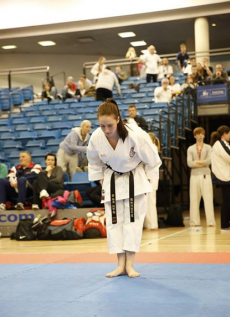
Karate is the most widely done martial art, and with over 70 different styles of karate, you’re unlikely to be stuck for choice when trying to find a club near you. It is a Japanese art that started in Okinawa in the 17th century, and its name translates to ‘empty hand’. This alone gives you an illusion to the emphasis on self-defence in karate, as indeed one of the founding instructors, Gichin Funakoshi, famously said. Karate uses all the body parts in its techniques and traditionally focuses on self-defence, fitness, and spirituality. However, many modern clubs have a huge focus on competition as, under the World Karate Federation, there are a wealth of difficult and international competitions that karateka can aspire to enter.
The officially recognised styles of karate come under either Shotokan, Wado Ryu, Shito Ryu, or Goju Ryu. However, there are many many more styles that this that often branch out from one of these styles, or combine principles from each to create something new. All karate is split into three elements of training: kihon (the basics), kata (a series of choreographed moves), and kumite (sparring). Some will tell you that kobodo (weapons) are also essential to karate, but in my experience more styles of karate exclude this element that include it so I’ve decided to leave it out.
Kihon includes all the techniques that you learn within a style of karate. This usually includes a range of strikes, blocks, stances and kicks, and can sometimes include sweeps and throws. Good kihon is essential to be able to perform kata or kumite properly, so emphasis is put on its training throughout the grades. In kata, competitors perform a series of pre-determined techniques that can include a range of kihon. Kata is performed as though you have an imaginary opponent, each technique needs to look realistic, though precision, strength, balance, breathing and concentration are also essential. There are particular katas you need to perform for each grade also. These vary in level depending on the grade. Lastly, kumite, in competition, is organised by age, weight, gender and level of experience, and kumite bouts can be between two and three minutes. In the WKF, the system of scoring it through points and judges around the mat will flag red or blue depending on which competitor they saw score. Levels of contact in kumite bouts vary depending on the competition, but finding semi-contact fights are perhaps the most common.
Karateka wear white uniforms called gi to do karate in, and it’s likely you’ve seen these in films before. They come in different weights, for example most wear heavy weight gis for kata but lightweight gis for kumite. There is also a belt system within karate that takes you from white belt all the way up to black belt, and after that, dan grades. Different styles use different systems, for example Wado Ryu goes from white to red, yellow, orange, green, blue, purple, brown, brown level two, and then black. For competition kumite, competitors must have protected mits, and shin and feet guards. Mouth guards are also essential. Men wear groin guards, whilst women wear chest guards, and certain children’s divisions also have face protectors.

0 Comment:
Be the first one to comment on this article.